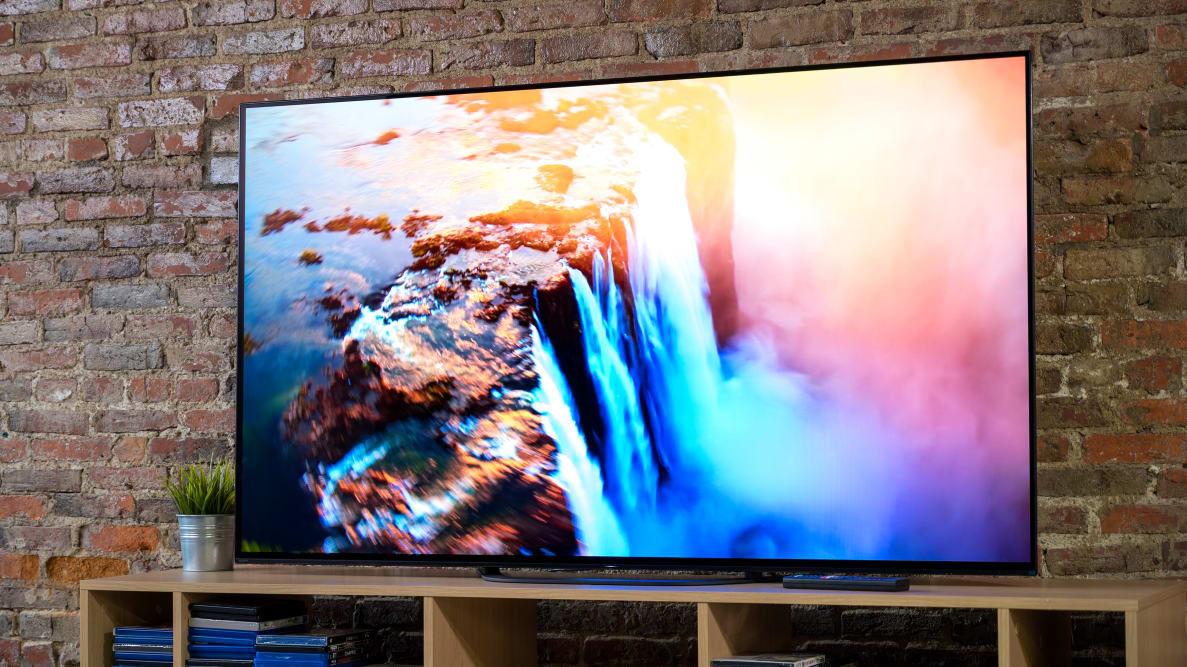Pros
-
Superb contrast
-
Excellent color
-
Solid motion handling
Cons
-
Not bright enough for some rooms
The Sony A8G (available at Amazon) is an OLED TV, and unsurprisingly, it offers superb contrast, vivid, true-to-life color, and fantastic motion handling. Equally as unsurprising, however, are its weaknesses: namely, that it doesn't get even half as bright as some of the best quantum dot TVs it's up against this year. Essentially, it's a great TV for every type of content; games, movies, TV shows, and sports. The only thing it's less-than-great for is a brightly lit living room.
Still, you oughtn't be disappointed if a TV as good as this winds up on your shortlist of potential purchases. If you can swing the price, the A8G is one of those TVs that still has the power to stop you in its tracks even after several weeks of looking at it.
About The Sony A8G OLED TV Series

The Sony A8G is technically a tier below the TVs in Sony's "Master Series" lineup, but nevertheless, it remains a premium offering, both in terms of price and performance. The A8G is available in two sizes. Here's how they shake out:
• 55-inch (Sony XBR-55A8G), MSRP $1,799.99 • 65-inch (Sony XBR-65A8G), MSRP $2,499.99
Different sizes of TVs in a series tend to perform identically to one another, and this is especially true for OLED TVs. In other words, the only noteworthy difference between the two A8G models is their screen size. Here's a rundown of what you're getting with both the 55- and 65-inch models:
• 4K (3,840 x 2,160) resolution • Supports High Dynamic Range (HDR10, HLG, and Dolby Vision) • Native 120 Hz refresh rate • Android smart platform • DCI-P3/10-bit color space
Performance Data
Before testing each TV, we make sure the panel is on and receiving a continuous signal for at least 24 hours, allowing the pixels plenty of time to warm up. All of the SDR tests were carried out in Sony's "Cinema Home" picture setting. For HDR tests, our chosen picture setting was also "Cinema Home."
We use a standard ANSI checkerboard pattern for most of our basic contrast tests (including the ones reported below), but we also use white and black windows ranging from 2% to 90% to test how well the contrast holds up while displaying varying degrees of brightness.
I'll expand on our test results throughout the review, but for now, here are some key takeaways:
• HDR contrast (brightness/black level): 267.2 nits/0.002 nits (ANSI checkerboard) • SDR contrast (brightness/black level): 210.8 nits/0.002 nits (ANSI checkerboard)
• HDR peak brightness: 667.8 nits (10% white window)
• HDR color gamut coverage: 98% (DCI-P3/10-bit) • SDR color gamut coverage: 100% (Rec.709)
• Viewing angle: ±59°
Connectivity
Both casual users and AV enthusiasts will find the Sony A8G's connectivity options to be satisfactory. Here's what you'll find in the cutout on the back of the panel:
• 4x HDMI 2.0 (1x ARC) • 3x USB (1x USB 3.0, 2x USB 2.0) • Component, LAN ethernet port, RF input, optical audio output
What We Like
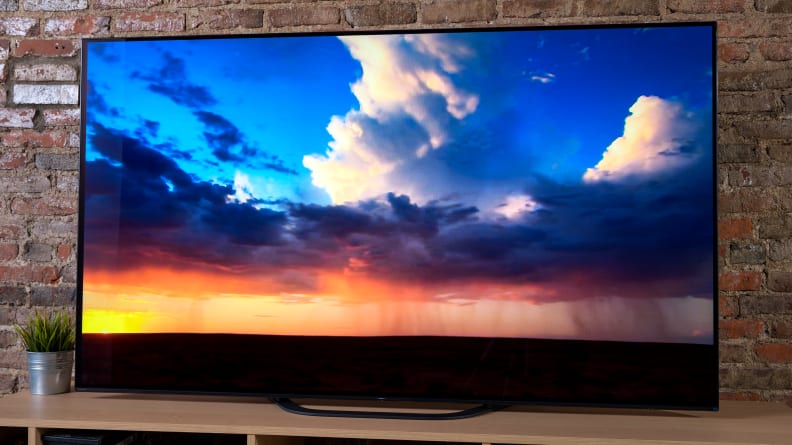
The first thing you'll notice about an OLED TV is its stunning contrast, and the A8G is no exception.
Everything we've come to expect from OLED
The A8G might be a slightly lesser version of of the OLED TVs Sony slaps with its "Master Series" stamp of quality, but that doesn't mean you're getting a lesser version of the OLED experience with the A8G series—with a couple of caveats aside, this is one of the best pictures money can buy at the moment.
Both HDR and standard look excellent on the A8G, but HDR content (Dolby Vision in particular) is the star of the show. Because OLED displays are capable of the deepest of black levels, dark, cinematic content mastered for HDR is the A8G's bread and butter, rendering shadow detail with the utmost clarity and avoiding the type of light bloom commonly found on high-end LED TVs that rely on full-array local dimming. If you're the type of person who insists on watching movies and shows in the dark, the A8G (like most OLEDs) is practically tailor-made for you.
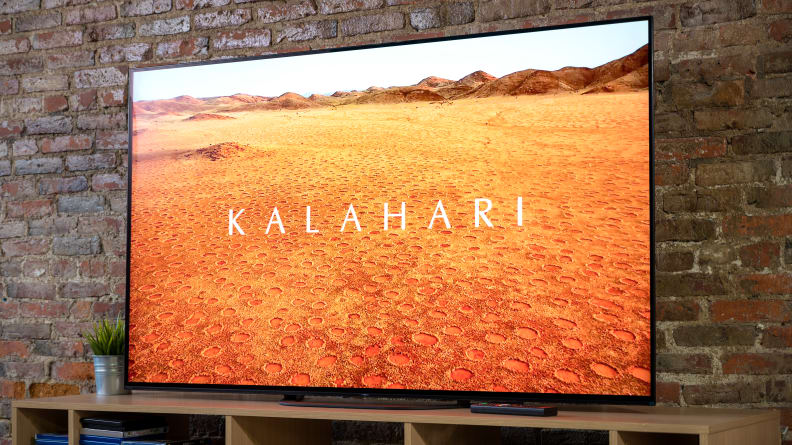
Being an OLED, the A8G's color output is phenomenal; I measured 98% coverage of the wide P3 color gamut when receiving an HDR signal.
The A8G's color production is also as impressive as we've come to expect from OLED displays. It covers 100% of the Rec.709 standard and an impressive 98% of the wide, DCI-P3/10-bit color gamut. No matter what you happen to be watching, you can expect accurate, voluminous color to be a part of the experience.
Classy, restrained design
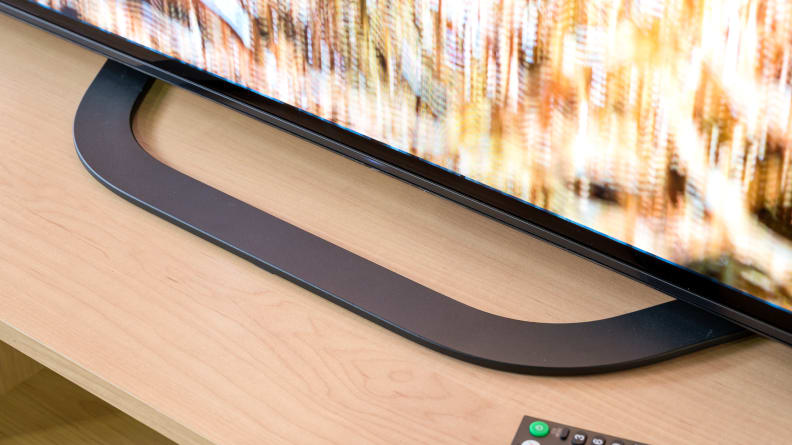
The A8G's design is tasteful and restrained, but still manages to look different than most TVs on the market today. The curved stand combined with the ultra-thin panel is a pleasant looking pairing.
In recent years, Sony's premium TV offerings have favored the sort of design that, while interesting, ultimately feel too fussy for their own good. The A8G, however, sports a look that keeps things simple without losing all of its weirdness—and I don't mean "weird" in a bad way.
Rather than propping itself up with the help two wide-set feet like seemingly every other TV on the market, the A8G rests on a thin, C-shaped stand whose rounded side peeks out from underneath the panel. It's just odd enough to be endearing without calling attention to its uniqueness.

My smartphone is thicker than this panel. It's absurd.
Of course, the real star of any OLED TV's design is the signature so-thin-it-looks-bendable panel, which has unsurprisingly elicited "oohs" and "ahhs" from just about every coworker of mine who's passed through the lab during the testing process.
Fantastic motion handling makes it a good pick for gamers and sports fans
As far as I'm concerned, one of the best things about the Sony A8G is its impressive motion handling. Initially, I sat, transfixed, watching the TV's store demo (a pinball gliding through an abstract, chrome-plated pinball machine) thinking to myself, "Sure, this looks good, but what about when I'm not watching a highly polished demo produced by the company that made this TV?"
As it turns out, the A8G delivers smooth, judder- and blur-free motion across a variety of content. Its 120 Hz native refresh rate puts it at the top of its class for all TVs. If you're a sports fan, this TV's got your back—it delivers all of the action cleanly, right out of the box, and without any tinkering to the TV's motion settings.
Wide viewing angles are not to be taken for granted
Being the miracle workers that they are, OLED displays are also wide-angle wonders; while the picture on most VA-style LCD panels starts to look questionable after moving just a couple of feet away from the center, OLED panels can maintain picture quality longer when faced with off-angle viewing.
With the A8G, for example, I measured a total viewing angle of ±59°, which means you've got several feet of lateral before the picture quality drops off considerably.
What We Don't Like
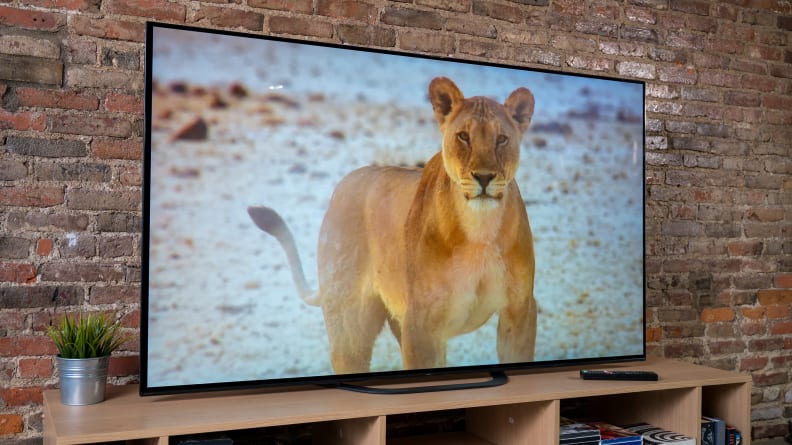
As is the case with just about every OLED TV, the A8G's Achilles' heel is its limited brightness.
Despite its superb contrast, it doesn't get as bright as the competition
As much as I somehow still manage to stand in awe of nearly every OLED TV I come across, it's certainly the case that these TVs don't get nearly as bright as some of the quantum dot TVs we've seen recently. Even the recently reviewed LG E9—the brightest OLED we've tested to date—doesn't come close to some of the high-end quantum dot offerings Samsung has released in recent years.
The A8G is no exception, unfortunately. At its brightest, while receiving an HDR signal, the A8G topped out at around 650 - 700 nits. For reference, we clocked the LG E9 at around 850 nits, and the Samsung Q80R, a recently released quantum dot TV, at around 1,140 nits.
All things being relative, it's important to remember that these ultra-bright, quantum-dot powered TVs aren't getting nearly as dark as the A8G; because of the nature of OLED, TVs like the A8G typically have a much easier time rendering, say, the gradation of light escaping from a shadowy portion of the picture. Another way to look at it is this: OLEDs feature wide contrast ratios because of their black levels and quantum dot TVs feature wide contrast ratios because of their inherent brightness.
At the end of the day, though, an OLED's biggest shortcoming—in my opinion, at least—is the tech's inherent, relative dimness and the all-too-often limitations when displaying content that features a particularly high amount of bright elements.
Not the best software
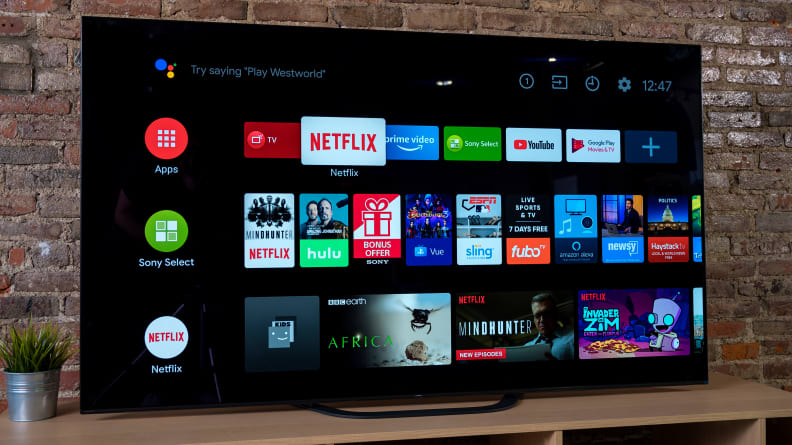
The A8G's software (including the Android smart platform) is zippy and flexible, but not as intuitive as it ought to be.
While I appreciate the flexibility and familiarity of Android-powered smart TVs, its integration often lacks fluidity. Although the A8G is a powerful enough TV to process the daily tasks of a smart TV in a snappy, responsive way, Sony's menu layout and overall design language doesn't harmonize with Android as well as I hoped.
Simple tasks, like navigating to the TV's settings menu, feel like they involve two or three unnecessary steps, and it'll probably take users a few weeks to ingrain the navigational routes for, say, changing picture modes or adjusting network settings.
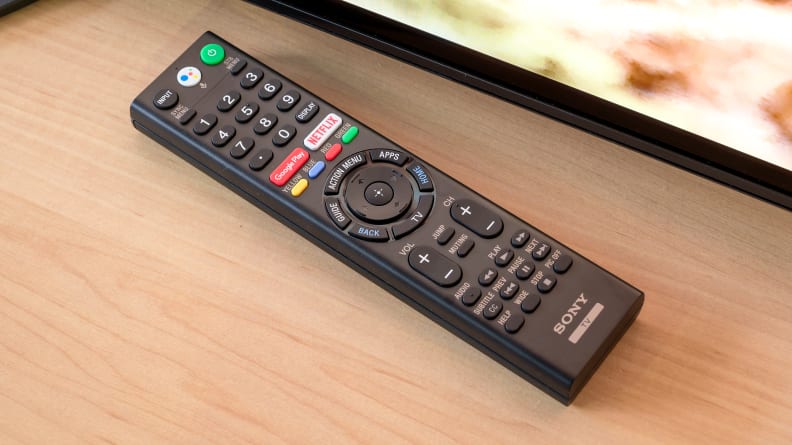
The remote is fine; tall, chunky, and responsive. The button labeling and overall layout could use some work, though.
Should You Buy It?
The Sony A8G is without a doubt one of the best TVs of 2019, but given the industry's current obsession with searingly bright TVs, it's understandable that some folks might find the steady, more restrained nature of OLED to be unworthy of the steep investment. Essentially, it all comes down to what you'd rather get out of a premium TV: an OLED display or a quantum-dot display.
The A8G is a great TV for just about everything and will look great in just about every setting, but if you're at all concerned about the brightness of your room and the inherent restraint of OLED panels, you might want to shift your focus to a high-octane, quantum-dot experience, like the Vizio P-Series Quantum X.
Alternatively, if you want some of the pop of a quantum dot TV experience but are hoping to find something with a more modest price tag, the Sony X950G is a great option, too. It doesn't get quite as bright as a QLED TV, but it gets pretty damn close—and you'll save several hundred dollars in the process.
All told, the A8G is a fantastic, relatively affordable OLED TV, such that they exist in 2019. There are better OLED TVs on the market, but they'll cost significantly more. The LG E9, for instance, produces a brighter picture, but is priced an order a magnitude higher. If you don't mind a slightly dimmer experience, the A8G is a wonderful compromise.
Meet the tester
Michael Desjardin graduated from Emerson College after having studied media production and screenwriting. He specializes in tech for Reviewed, but also loves film criticism, weird ambient music, cooking, and food in general.
Checking our work.
Our team is here to help you buy the best stuff and love what you own. Our writers, editors, and experts obsess over the products we cover to make sure you're confident and satisfied. Have a different opinion about something we recommend? Email us and we'll compare notes.
Shoot us an email
